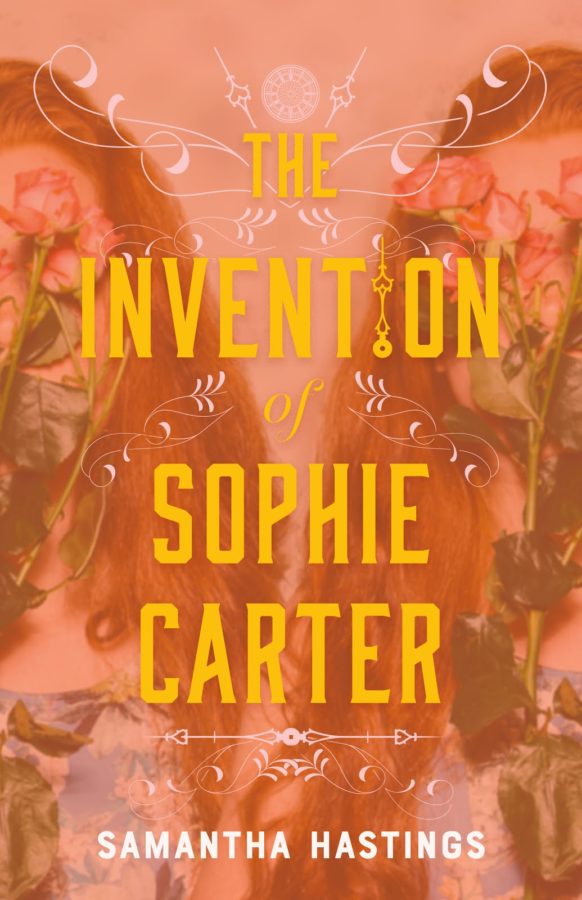Samantha Hastings brings back the classic twin switching trope in her Victorian-era young adult romance novel, The Invention of Sophie Carter. Deviating from the mystery genre of her debut, The Last Word, Hastings opts to maintain the Victorian setting in her sophomore novel. Centering on painting, invention, books, and self-discovery, The Invention of Sophie Carter takes a closer look at love—in romance and beyond.
Sophie and Mariah Carter only have each other. Orphaned at a young age, they have no family they can truly call theirs. But that might change when they receive the opportunity to stay with their maternal aunt—except there is a catch. Lady Bentley offers to take only one of them in, for one season in which they are expected to find a husband. With no interest in marriage, Sophie instead seizes the opportunity for the chance to stay in London and pursue her dream in clock making—with her sister, of course. Living under Aunt Bentley’s roof as one person, the twins embark on their journey of pursuing their dreams.
Compared to her sister Sophie, Mariah Carter is less brash in her personality and attitude towards approaching her dreams. She prefers to express herself through painting rather than tinkering around with mechanical clocks. While Sophie has a more proactive attitude regarding her pursuits, Mariah is more tenderhearted and willing to settle. She finds love in whatever situation they are dealt, which is an amazing feat considering their somewhat troubled childhood. Sophie, on the other hand, has become more cynical towards people and romance. Though they have been together their whole lives, the sisters find they still have much to learn from each other.
Ironically, The Invention of Sophie Carter is about each twin’s discovery of herself. Though it is a Victorian-era YA historical romance, the romance only runs parallel to the main plot. The relationships in the novel are complex, especially the sisters’ relationship with each other.
Taking the trope of twins who are only identical appearance but polar opposites in personalities, pretending to be one person becomes all the more difficult. Feeling like she lives in the shadow of her more outspoken twin, Mariah struggles to find her own voice. At the beginning of the novel, it felt as if Sophie was given more page time, but Mariah’s character is developed more subtly. The character development throughout the novel felt natural and emerged in a way that had me rooting for them the whole time. Still, I would have enjoyed seeing more of Mariah’s perspective.
However, the pacing was slightly less natural. At times it was slow, while other scenes felt cut off too soon. For example, the epilogue felt rushed and almost unnecessary.
On the other hand, the romance was executed in a way that contributed to the character development arc. Of course, pretending to be one person presents its own obstacles for Sophie, Mariah, and their love interests. . .
The sisters had a complex childhood—seeing how it affected them in different ways makes the reader take a closer look at how each sister expresses herself. In being constantly underestimated both as women in the Victorian era with their career aspirations, as well as the people around them due to their orphan status, the character development only carries a stronger impact.
Advertisement
Since the twin switch trope is an old one, it would have been fun to see more situations in which they had to do some quick thinking to keep up their scheme, which could add more humor to the story.
Overall, The Invention of Sophie Carter was a cute book. Though not the most memorable, it is still a fun summer read. If you are a fan of the twin switching trope, or would like a cute romance to pass the time in quarantine, then The Invention of Sophie Carter might just be the book for you.
Advertisement
